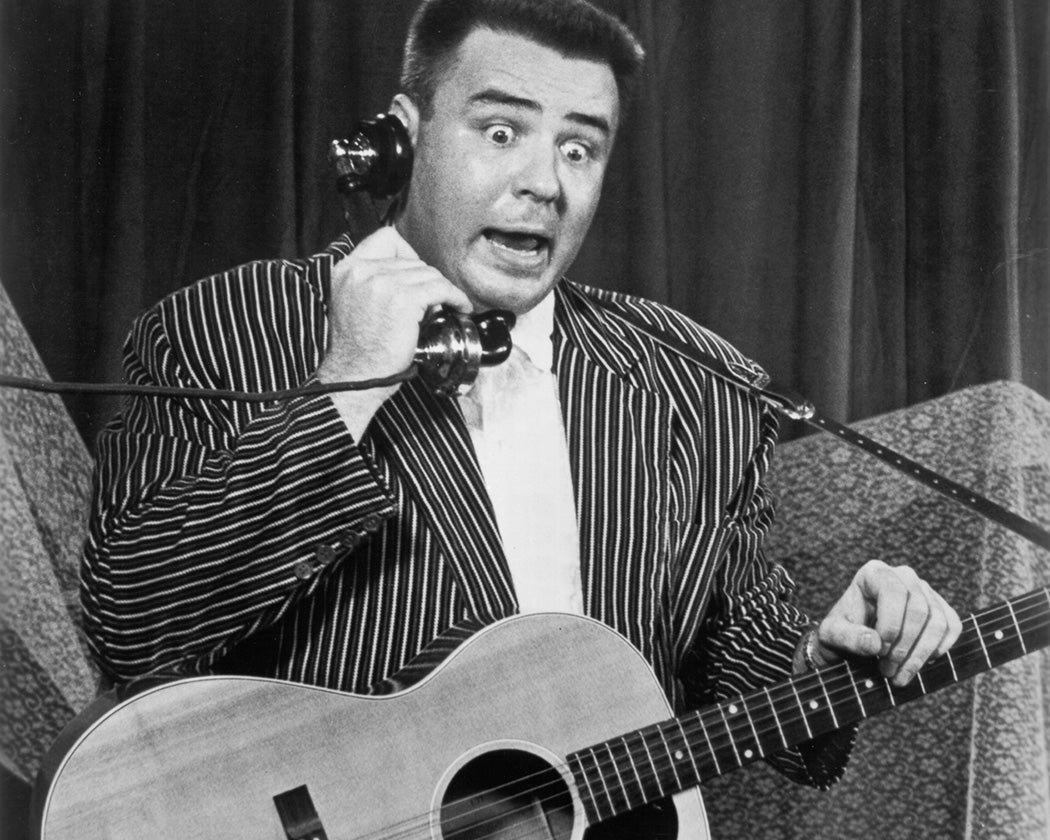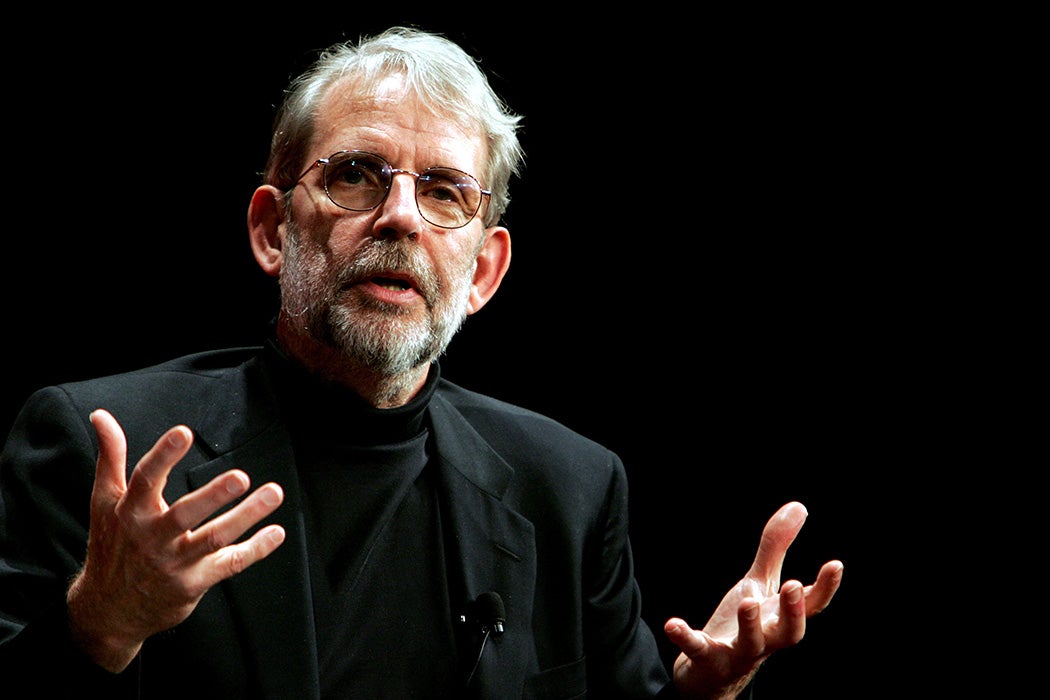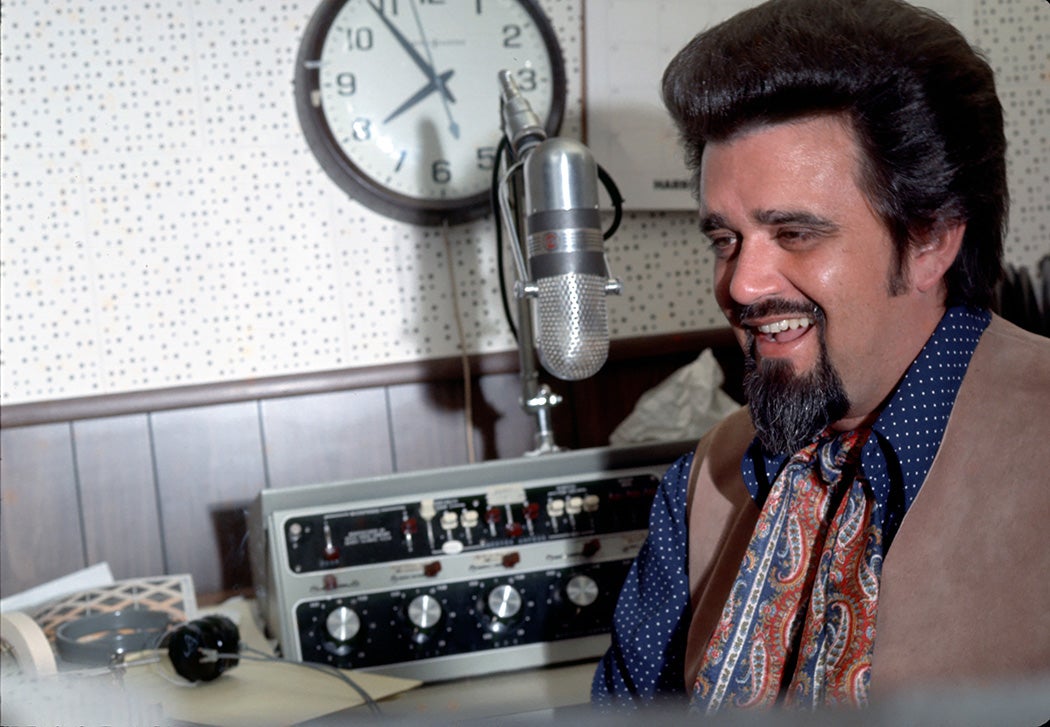Almost a half century ago, American Graffiti, directed by George Lucas, hit the big screen. Sandwiched between the quiet THX 1138 (1971) and the blockbuster Star Wars (1977), Lucas’s second feature peered back a decade earlier, taking place at the tail end of the summer of 1962. The movie is filled with images of an era already experienced as bygone—roller-skating diner waitresses, souped-up jalopies cruising the streets—and, just as critically, with its sounds. The latter were accomplished thanks largely to Walter Murch (“Sound Montage and Re-recording,” the opening credits state opaquely), who helped revolutionize the role of sound in film. Age thirty at the time of its release, Murch had just completed similar work on The Godfather, directed by American Graffiti producer Francis Ford Coppola, and would soon move on to Coppola’s The Conversation. Born and raised in New York City, Murch fell in with the California movie mavericks during graduate school at USC.
Nearly twenty years after American Graffiti’s release, literary critic Fredric Jameson, in 1991, singled it out as a central example of what he termed “nostalgia films,” citing it as nothing less than the “inaugural film of this new aesthetic discourse.” The movie’s fiftieth anniversary—this August—provides an opportunity to look back, just as Lucas’s movie itself did.
Weekly Newsletter
American Graffiti is set in what Film Quarterly reviewer Michael Dempsey called, at the time of its release, the “last year of the fifties.” The movie follows one extended, momentous, and mostly sleepless night in the life of teenagers in a small town not far from San Francisco. Some want to hook up, others to brawl, and a few dangle at the precipice of life-altering decision-making. Dempsey’s qualified chronology nods to the assassination of President John F. Kennedy the following year; just as unimaginable to the innocents who populate American Graffiti is the eventual escalation of the war in Vietnam. (The movie itself appeared during what could be described as the last year of the 1960s: almost exactly twelve months before the resignation of President Richard Nixon.)
Arriving four years after Woodstock, American Graffiti embraced its old-fashioned setting by featuring a nearly non-stop soundtrack of more than forty classic pop hits, most from the 1950s; “Crying in the Chapel,” the earliest, by Sonny Till & the Orioles came out in 1953. A couple of recent tracks were contemporary to the film’s story: the Beach Boys’ “Surfin’ Safari” and “Green Onions” by Booker T. & the M.G.’s, both released in 1962. They appear later in the film and can be heard as evidence that the 1950s are transforming into the 1960s. Not all the characters are on board with change. “I don’t like that surfin’ shit,” the hot-rodding John Milner (played by Paul Le Mat, in unapologetic James Dean mode) tells precocious twelve-year-old Carol (Mackenzie Phillips) while cruising around town. Milner senses that his days as the valley’s fastest driver are drawing to a close. Arguments about music provide a proxy for his anxiety.
Lucas has a lot of fun with the song placements as the story unfolds. A character nicknamed the Toad (Charles Martin Smith) looks up while trying to steal back a car, only to find the menacing thieves looming over him; the Big Bopper’s exaggerated “Helllllo baaaaaby,” from “Chantilly Lace,” kicks in. Toward the movie’s end, we hear “To the Aisle” by the Five Satins as American Graffiti’s central couple (Ron Howard’s Steve Bolander and Cindy Williams’ Laurie Henderson) stress-test the future of their relationship. Soon after, Bobby Freeman’s “Do You Wanna Dance” plays just as Milner finally faces down the driver (played by Harrison Ford pre-Han Solo) who has been trying to challenge him all night.

The very opening track of the movie sets the stage for such creative song selection: “Rock Around the Clock” by Bill Haley and His Comets announces from the start that the film will take place in under a day, beginning at dusk at a diner and ending after dawn at the airport. The same song will serve the following year in the credits to the TV series Happy Days, starring Howard in a similar role, as Richie Cunningham. As Jameson suggests, American Graffiti didn’t just provide a template for subsequent “nostalgia” trips; it populated them, as well. A few years on, in 1978, Smith played the bassist in the Crickets, the backing band in The Buddy Holly Story. Holly, several of whose songs appear in American Graffiti, died in the same “day the music died” 1959 plane flight as Ritchie Valens and the Big Bopper. Williams would later appear on a Happy Days spin-off, Laverne & Shirley.
Song selection alone, however, would only have made the movie good. What elevates the music in American Graffiti—and the film along with it—is what the audience hears. In Steve and Laurie’s “To the Aisle” scene, for example, the song sounds as clear as if it were playing on a hi-fi system in a living room; when the camera switches from an overhead crane shot to the interior of the car, we suddenly hear the song as the couple does: muffled and static-laden, as if over the radio. This strategy recurs throughout the film: each time the listener first gets a sense of the classic song, and then experiences it from a character’s perspective, whether in a car, a store, or the echoing hall where a school dance (a “hop,” in period parlance) takes place.

This technique has a name: “worldizing.” It is something Murch perfected during the production of American Graffiti. “Worldizing,” says Liz Greene, who writes about and teaches film sound, is “a sound recorded or created in studio or elsewhere that is then treated so that it sounds as if it is heard in another acoustic location.” In the narrative context of film, this approach, “gives multiply sourced sounds a coherent sonic signature suggestive of a shared time-space,” says Mack Hagood, a professor of media and communications.
Because the film follows several characters over the course of the night, their scenes sometimes overlapping, there are multiple climactic moments. One features clean-cut Curt Henderson (Richard Dreyfuss, with the same wound-tight momentum he later displays in Jaws and Close Encounters of the Third Kind). Curt glimpses a beautiful blonde in a car early on. She becomes his quest, which leads him to a radio station on the outskirts of town. This is the station that has been broadcasting almost all the tracks heard in the film (exceptions being the songs performed by the band at the hop). Curt encounters a chatty DJ, who offers him a popsicle and life advice. Initially unbeknownst to Curt, this DJ is in fact the very same Wolfman Jack whose voice is heard throughout the night in cars and other radios around town. (The real-life Wolfman Jack, born Robert Smith in Brooklyn, plays himself. The station name in the film, XERB, is borrowed from an AM station in Mexico, where he worked in the 1960s. The influential station’s powerful signal reached deep into the US.)

There is an expansion of the “worldizing” technique at the opening of this scene. In contrast with other, earlier “worldizing” moments, when the film moves from a sterling recording to a heavily treated one, we hear the song in three different ways: first pure, then as if on the radio in Curt’s car as he seeks the Wolfman, and then finally inside the radio studio, where the music is deep and rich. The song, “Crying in the Chapel,” has lyrics which are almost too on-point: “I searched and I searched / But I couldn’t find / No way on Earth / To gain peace of mind.”
If forty-plus songs packed into a 112-minute movie sounds overwhelming, keep in mind that it entirely lacks a traditional score. There is no music in American Graffiti other than the songs. Almost all the film’s sonic storytelling is delivered by these songs as they’re heard: bleeding through walls or blaring from speakers.
The only exceptions are moments when sound effects do the work. At one point, the Toad and his new friend, Debbie Dunham (Candy Clark, soon to appear in The Man Who Fell to Earth alongside David Bowie), walk through the dark woods. Debbie unnerves the Toad with scary stories, and layers of noises, goat bleats, and a rising heartbeat provide the horror vibes.
Another scene parallels one from Murch’s earlier work on The Godfather, in which Al Pacino’s Michael Corleone broods over using a gun that has been secreted in a bathroom. No orchestral score plays during the Godfather sequence until its very end. As Marcia J. Citron describes in The Musical Quarterly, Murch “supplied a brilliant substitute in the rushing noise of outside subway trains in rifflike segments that chart Michael’s rising angst as the time to shoot grows near.” In American Graffiti, Murch employs this same approach when Curt is forced by gang members to damage a police car. The entire time Curt works silently, just out of view of two officers, an unseen passing freight train—all lumbering motion, pulse-quickening horns, and irritating creaking—telegraphs the tension and Curt’s nervousness.
Murch, of course, wasn’t alone in this success. Other key figures involved in the film’s audio included Arthur Rochester (Production Sound), James Nelson (Sound Editing), and Karin Green (Music Coordinator). Kim Fowley, a legendary figure in rock music (he produced the novelty hit “Alley Oop,” co-wrote songs with Cat Stevens and Warren Zevon, and managed the early punk act the Runaways), oversaw the band that performs at the school dance, Flash Cadillac and the Continental Kids.
In the years immediately following American Graffiti, Lucas went on to populate a galaxy far, far away, while Murch further explored the imaginary possibilities of sonic space. Emerging technologies enabled both pursuits.
One particularly welcome upgrade for Murch was the arrival of stereo, not just for recording but for playback in movie theaters. As historian Eric Dienstfrey noted, the premiere theatrical sound technology company of the time, Dolby, “gained renown for enabling a new generation of filmmakers to experiment with the aesthetic possibilities of its equipment.” (Lucasfilm founded a Dolby competitor in 1983, naming it after his debut film: THX. Another abbreviation of the title, THX 138, appears on the license plate of Milner’s yellow car in American Graffiti.)
Murch’s first deployment of stereo in film would be for 1979’s Apocalypse Now. The widescreen warfare of Coppola’s landmark Vietnam drama demanded and benefited from full spectrum assault. That approach contrasts with the audio in American Graffiti, which is, like the archaic single-speaker AM radios of the 1950s, entirely monophonic. Apocalypse Now earned Murch his first Oscar, for Best Sound.
Of course, Apocalypse Now is not all battle scenes. In a conversation with novelist Michael Ondaatje, Murch described coaching Martin Sheen, the film’s protagonist, for a voiceover sequence: “I asked Sheen to imagine that the microphone was somebody’s head on the pillow next to him, and that he was just talking to her with that kind of intimacy.”
The stereophonic power to map different sounds to specific areas of a movie theater, however, didn’t inherently simplify the process of situating listeners in an imagined three-dimensional space. “You have to be very careful about what sounds you put behind the audience,” Murch later told Penn State, York professor Michael Jarrett. “They can distract attention away from the screen. We had a whole list of do’s and don’ts: sounds that were permissible in the back and sounds that were not permissible in the back. Sounds that have great definition we kept in the front.”
Murch also explained to Jarrett, in the same discussion, how worldizing was central to American Graffiti’s sense of place: “The idea was that every teenage car in this town was turned to the same station, and, therefore, anywhere you went in the town, you heard this sound echoing off the buildings and passing by in cars.” Which is to say, the notion of using sound to depict three-dimensional space was already on Murch’s mind during that monophonic production. Fifty years ago, he was pushing boundaries while he waited for technology to catch up.







